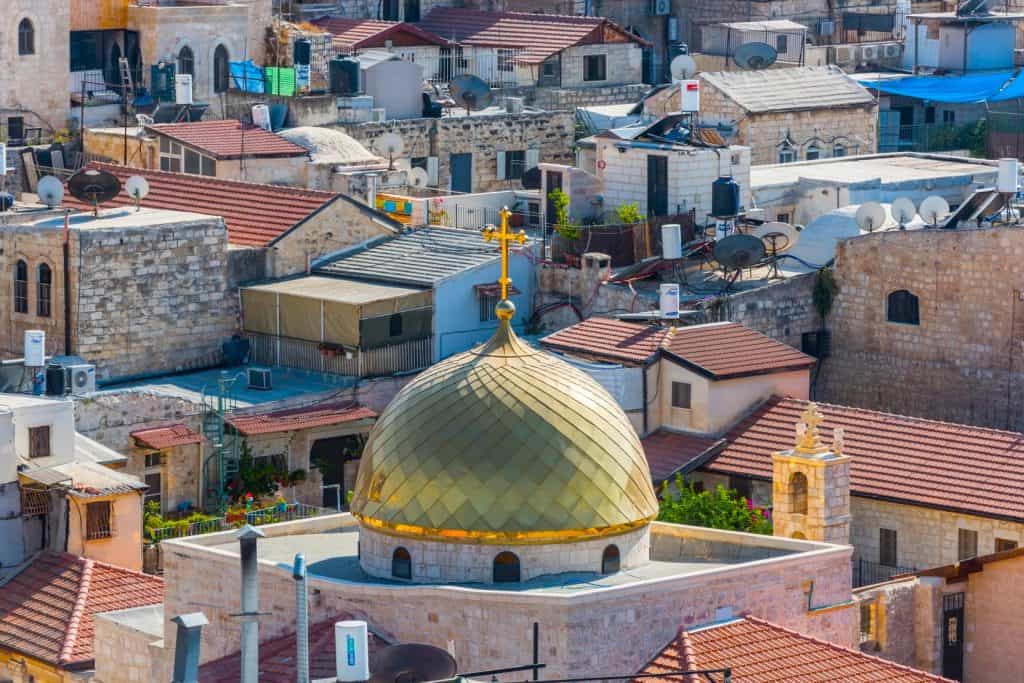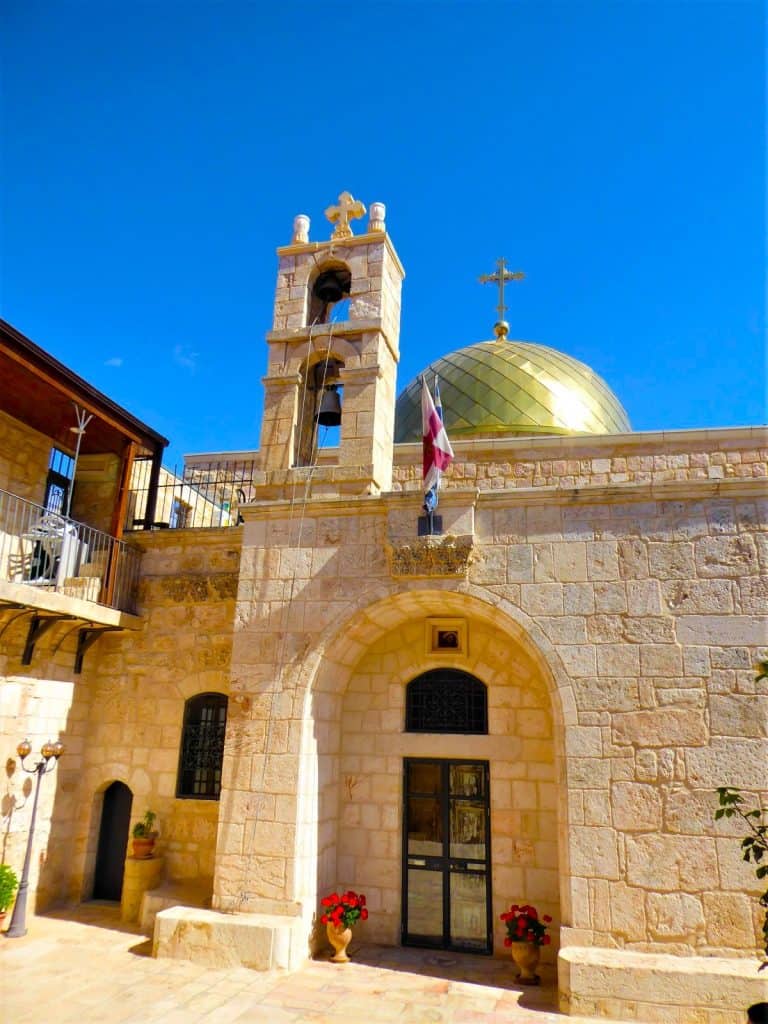The Church of Saint John the Baptist in the Muristan area of the Christian Quarter of Jerusalem is a small Greek Orthodox church. In its current form, most of the above-ground church dates to the 11th century and the crypt to the Late Roman or Byzantine period (between ca. 324 and 500 CE. The first structure was built sometime in the 4th-6th century and served an unknown purpose. It was damaged at the Persian conquest of Jerusalem in 614 and then extensively modified. One historical source can be interpreted to mean that it was restored during the 7th century by John the Almoner, Patriarch of Alexandria.

Church of Saint John the Baptist: Medieval Period
By the 11th century, the ancient structure had sunk to at least 3 meters beneath the street level, with its doors and windows blocked, and served as a storage place for goods and water. During this century, an organization of Amalfitan merchants settled in Jerusalem. It acquired the southwest corner of the Hadrianic forum, where they established a pilgrim hospice with a hospital and a church.
The new church was erected above the ancient structure, which became its basement and dictated the tri-lapsed layout of the entire church. Benedictine monks tended to this church. In 1099, Crusader knights injured during the siege of Jerusalem were treated at the hospital. After recovering, started here what was to become the Order of Knights of the Hospital of Saint John of Jerusalem, named after the church, also known as the Knights Hospitaller. After the capture of Jerusalem by Saladin in 1187, the basement was filled with debris.

Church of Saint John the Baptist: Ottoman Period
At the end of the 15th century, the Greek Orthodox Patriarchate of Jerusalem acquired the church and most probably transformed the basement into a chapel, which, according to the excavator Jean-Baptiste Humbert of the École Biblique, might well constitute the first time that the structure was used for a cultic purpose. During the 16th century, the church was used for a short period as a mosque but was soon recovered by the Greek Orthodox, who, in 1660, built a large pilgrim hospice next to it. In the 19th century, the crypt was cleared out, and an impressive shrine was brought to light from the masonry of the altar.
Original Purpose of the Building: Traditional Vs Scholarly View
The traditional view holds that the ancient building was founded as a church in 450-460 by Empress Eudoсia and restored after the destruction by Persians in 614. According to one Greek Orthodox tradition, the head of St. John the Baptist was held in this church. But the long-held scholarly opinion is that the original Late Roman or Byzantine structure was built as a church, relies in part on John Rufus (born c. 450 CE); who in his Plérophories possibly refers to a church dedicated to Saint John the Baptist, in existence in Jerusalem during the 6th century.
Byzantine sources refer to a shrine in the western part of Jerusalem holding relics of the Baptist’s head. No archaeological or textual proof exists that the current John the Baptist Church is the church John Rufus or other Byzantine sources might have alluded to. The Late Roman building excavated by Humbert in 2010-2011, which became the crypt of the current church, bears no Christian architectural marks.
But such were not to be expected during the 4th-6th centuries when church architecture followed Roman pre-Christian layouts. Now Humbert allows for the possibility that a shrine dedicated to the head of the Baptist might not have served eucharistic liturgical purposes and thus have had an unusual layout; or that an originally secular building may have been rededicated as a church.
He also suggests that a church restoration in this area by Saint John the Almoner after 614 may have led to later confusion and an association of the last medieval church with the more revered Saint John, namely the Baptist. The fact that the pilgrim hospice built in this same area by Charles the Great in ca. 800 was always mentioned as Saint Mary, not Saint John, indicates that the connection with the Baptist is later.
Be it as it may, at the arrival of the Amalfitans in the 11th century, this tradition already existed, and they dedicated their new church, to which the ancient structure served as the basement, to St John the Baptist.
Humbert proposes that the initial structure was used for the first time for ritual purposes by the Greek Orthodox, in the 19th century, as an underground chapel beneath the 11th-century church.
Humbert does not dismiss the possibility that the ancient structure might have been erected as a secular building by Constantine the Great, or as a Christian shrine or church by either Eudoсia (as suggested by Byzantine sources), even more, likely by Justinian, or by Anastasius, who had built a church dedicated to the Baptist at the Jordan River around the year 500.

